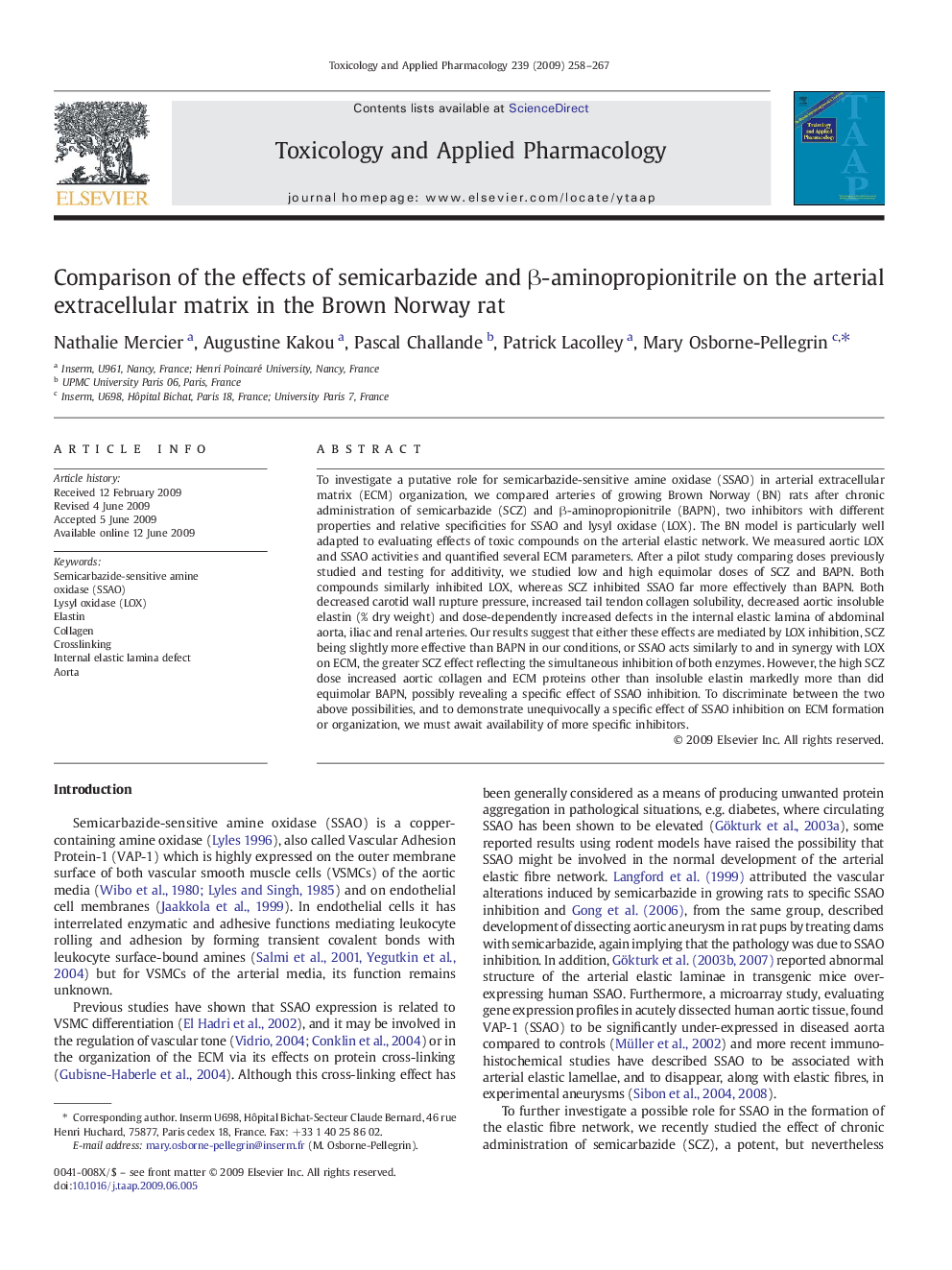| Article ID | Journal | Published Year | Pages | File Type |
|---|---|---|---|---|
| 2570517 | Toxicology and Applied Pharmacology | 2009 | 10 Pages |
To investigate a putative role for semicarbazide-sensitive amine oxidase (SSAO) in arterial extracellular matrix (ECM) organization, we compared arteries of growing Brown Norway (BN) rats after chronic administration of semicarbazide (SCZ) and β-aminopropionitrile (BAPN), two inhibitors with different properties and relative specificities for SSAO and lysyl oxidase (LOX). The BN model is particularly well adapted to evaluating effects of toxic compounds on the arterial elastic network. We measured aortic LOX and SSAO activities and quantified several ECM parameters. After a pilot study comparing doses previously studied and testing for additivity, we studied low and high equimolar doses of SCZ and BAPN. Both compounds similarly inhibited LOX, whereas SCZ inhibited SSAO far more effectively than BAPN. Both decreased carotid wall rupture pressure, increased tail tendon collagen solubility, decreased aortic insoluble elastin (% dry weight) and dose-dependently increased defects in the internal elastic lamina of abdominal aorta, iliac and renal arteries. Our results suggest that either these effects are mediated by LOX inhibition, SCZ being slightly more effective than BAPN in our conditions, or SSAO acts similarly to and in synergy with LOX on ECM, the greater SCZ effect reflecting the simultaneous inhibition of both enzymes. However, the high SCZ dose increased aortic collagen and ECM proteins other than insoluble elastin markedly more than did equimolar BAPN, possibly revealing a specific effect of SSAO inhibition. To discriminate between the two above possibilities, and to demonstrate unequivocally a specific effect of SSAO inhibition on ECM formation or organization, we must await availability of more specific inhibitors.
